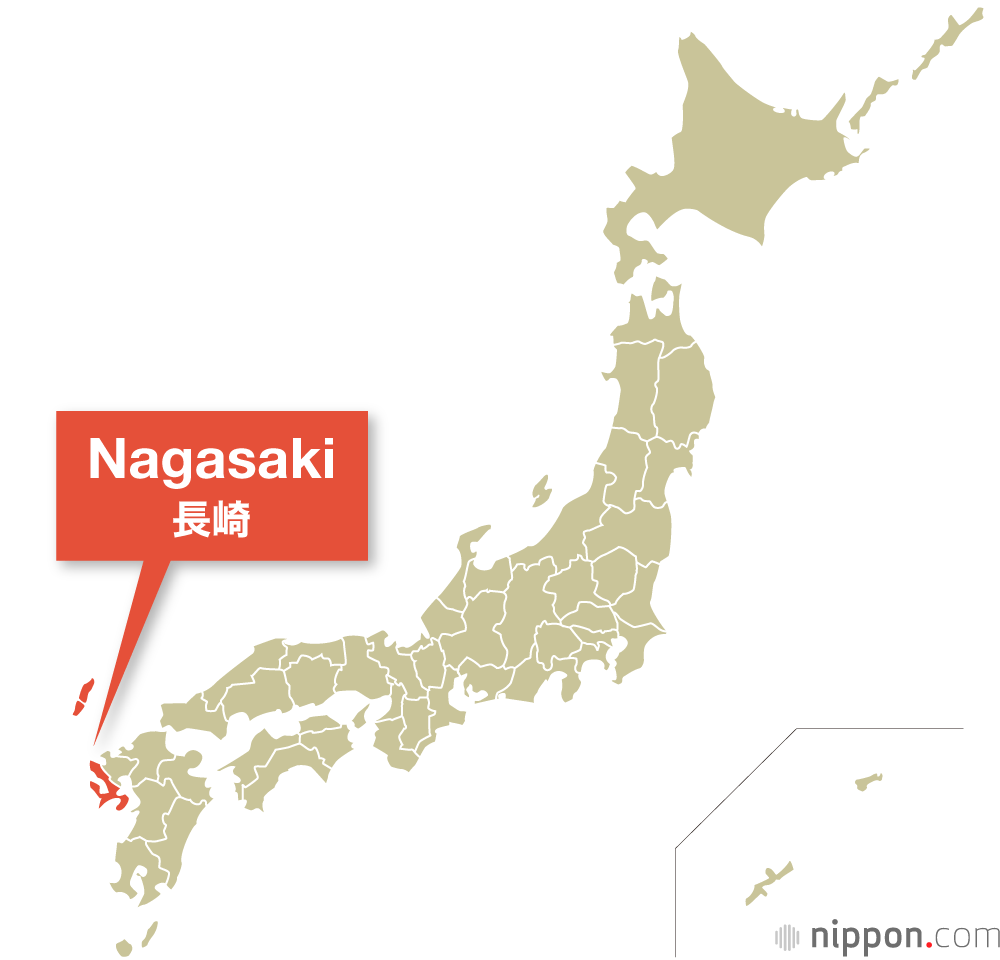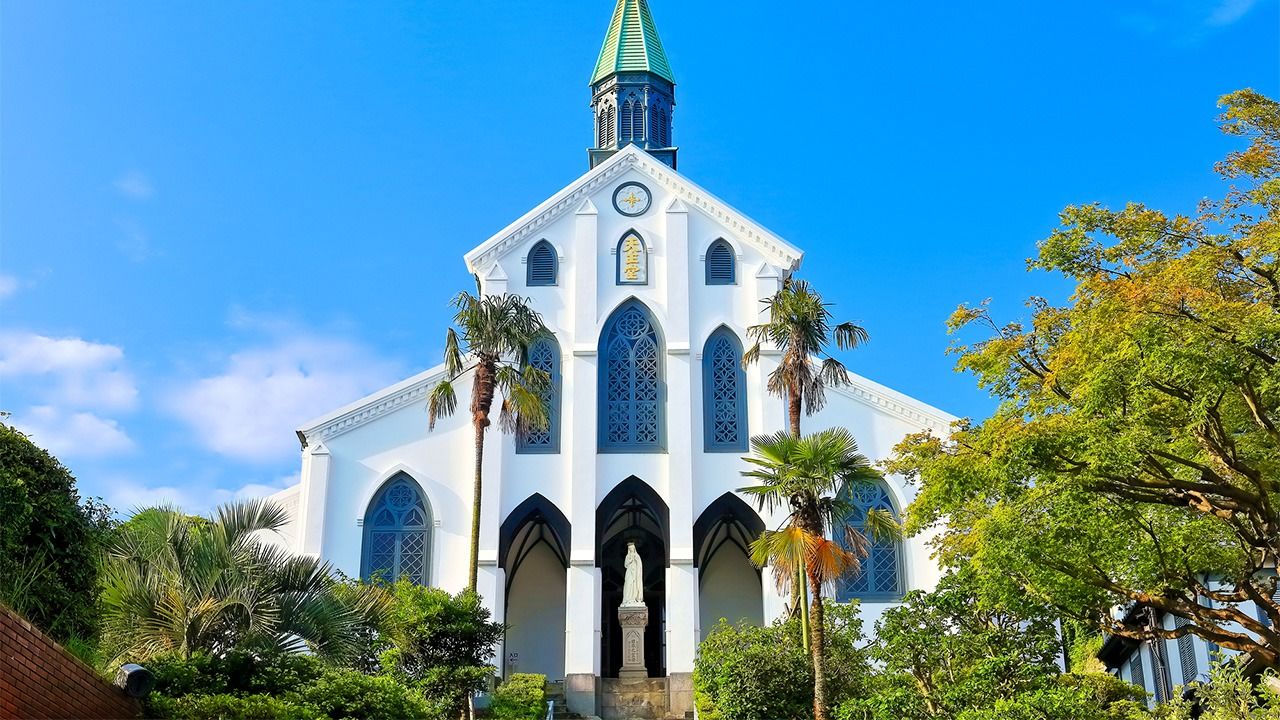
Nagasaki Prefecture
Guideto Japan
Culture History- English
- 日本語
- 简体字
- 繁體字
- Français
- Español
- العربية
- Русский
Nagasaki Prefecture is located in the northwestern part of Kyūshū. It borders Saga Prefecture to the east and boasts an extensive, rugged coastline, the second longest of any prefecture, dotted by hundreds of islands. To the east, the Shimabara Peninsula borders the Ariake Sea, the remote Gotō Islands lie to the west, and the islands of Iki and Tsushima are to the northwest in the Tsushima Strait. The prefecture is mountainous, including the major peaks Unzen, Tara, and Kunimi.
Nagasaki Prefecture at a Glance
- Established in 1869 (formerly Hizen, Iki, and Tsushima provinces)
- Capital: Nagasaki
- Population: 1,312,000 (as of Oct. 2020)
- Area: 4,131 km2
Nagasaki played a pivotal role in Japan’s international relations for centuries, bringing influences that are still seen in the culture and cuisine of the prefecture. These include the Nagasaki Lantern Festival held during the Chinese New Year and Western inspired castella sweets. Nagasaki was one of the first places in the country Christian missionaries set foot, and the island of Hirado and the Gotō chain are home to historic churches and other religious sites that received UNESCO World Heritage listing in 2018. The Shimabara Peninsula offers hiking, hot springs, and historic sites, and the theme park Huis Ten Bosch re-creates a Dutch town. The capital of Nagasaki is home to places like the settlement of Dejima, linked to its past as Japan’s only foreign port during the period of national seclusion, as well as parks and museums memorializing the August 1945 atomic bombing of the city.
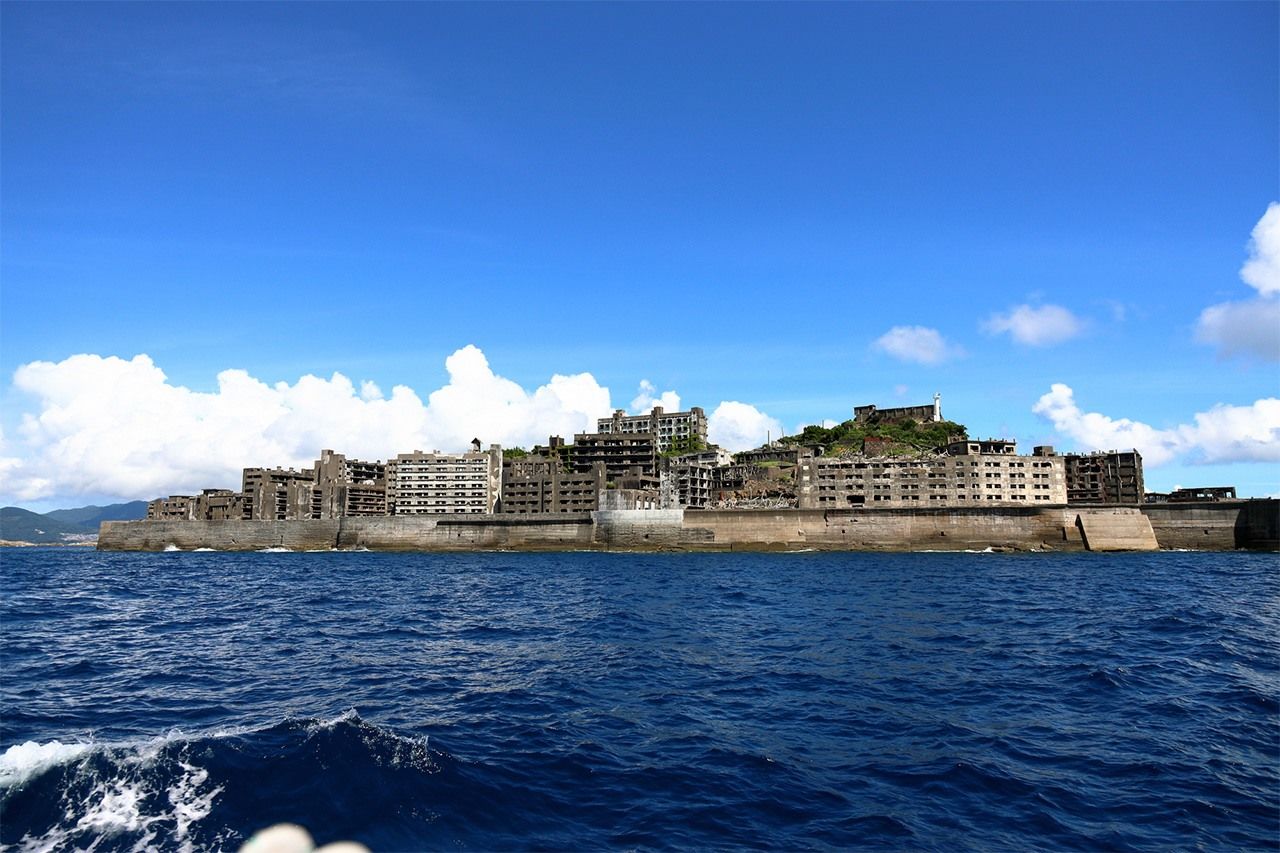
Gunkanjima, home to the now-abandoned Hashima Coal Mine, was among the sites of Japan’s Meiji industrial revolution that received UNESCO World Heritage listing in 2015. (© Pixta)
Surrounded by the sea, Nagasaki has an abundance of marine resources, with its fishing industry hauling in large catches of sardines, yellowtail, and horse mackerel. There is also a thriving aquaculture industry, such as for sea bream, and the seafood processing and food industries are similarly well developed. Representative agricultural products include mikan citrus, biwa (loquats), and wagyū beef. The shipbuilding industry is a world leader. Other manufacturing sectors include machinery, metal production, and textiles. Pottery in the form of Mikawachi and Hasami wares is a major traditional industry.
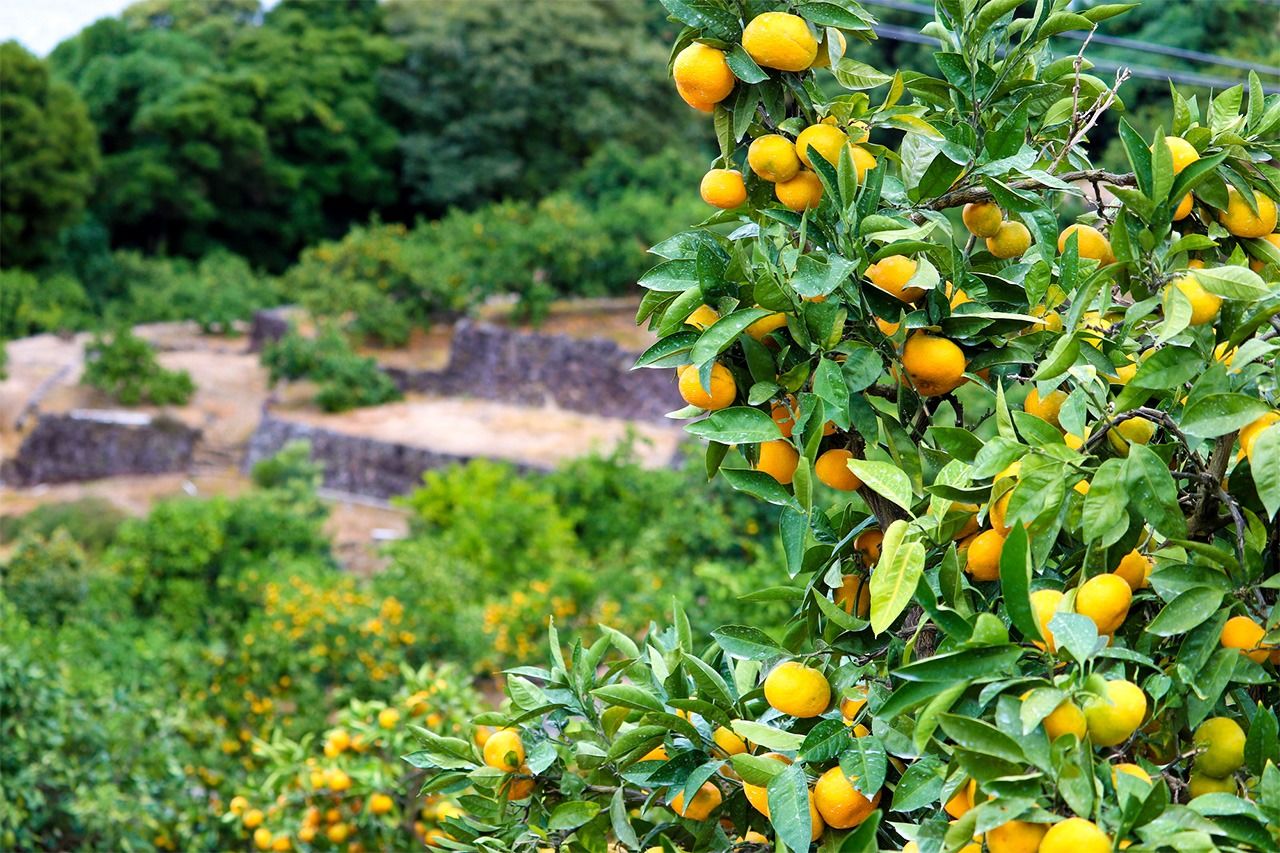
Ikiriki is a well-known brand of mikan from Nagasaki. (© Pixta)
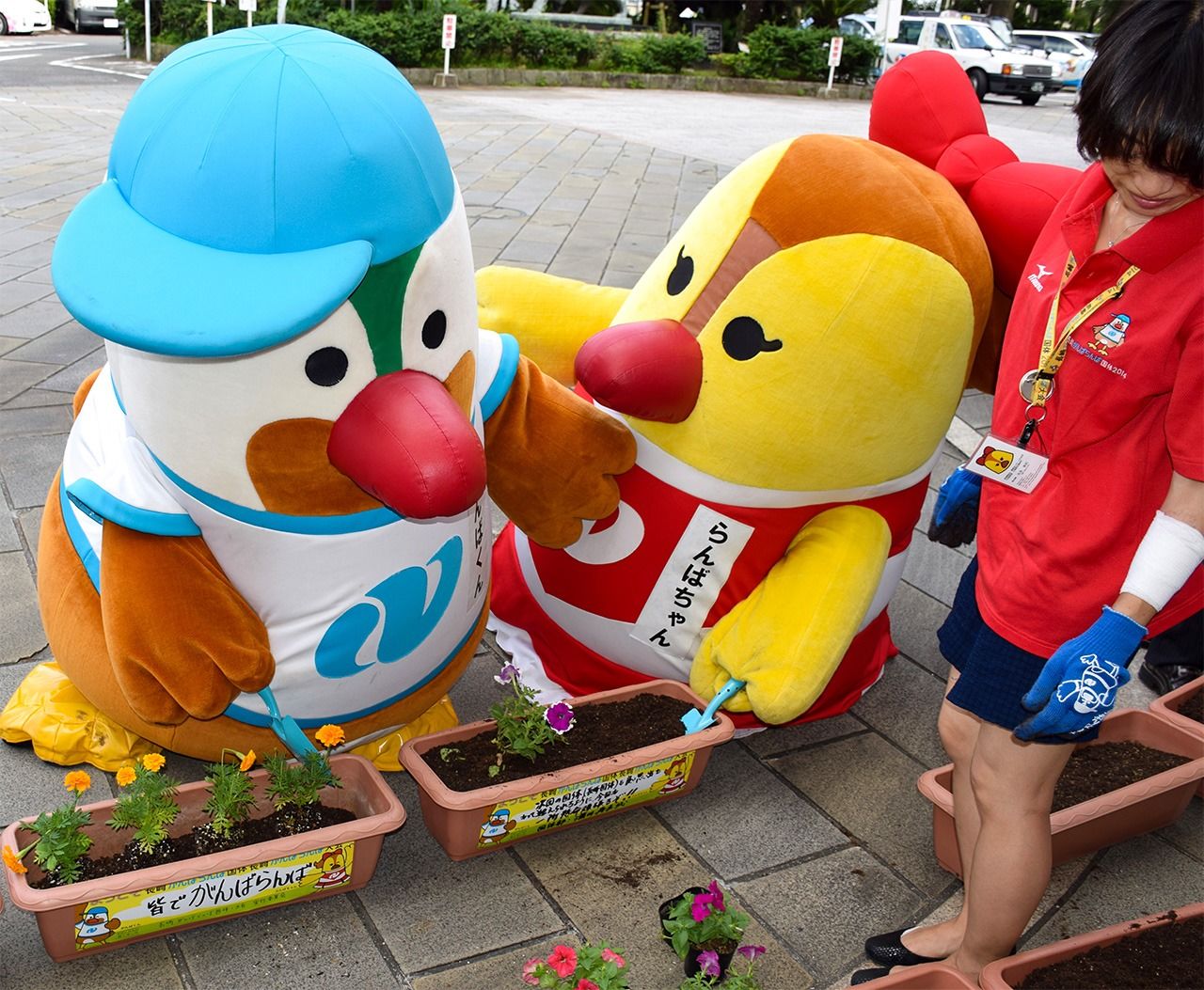
Nagasaki’s official mascots Ganbakun (left) and Ranbachan are mandarin ducks, the prefectural bird. (© Jiji)
Famous Figures
- Kusumoto Ine (1827–1903): First female physician to practice Western medicine in Japan. Daughter of Bavarian-born doctor and naturalist Philipp Franz von Siebold and courtesan Kusumoto Taki.
- Murakami Ryū (1952–): Novelist. Translated works include Almost Transparent Blue and Coin Locker Babies.
(Originally published in English. Banner photo: The historic Ōura Church in Nagasaki. © Pixta.)
For the complete list of the country’s 47 prefectures, see “The Prefectures of Japan.”
